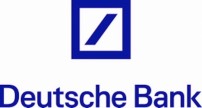ZINC LME
CONTRACT SPECIFICATION
| Trading Screen Product Name | LME Zinc | |
| Commodity Code | LZHZ / ZDS | |
| Contract Size | 25 tons / lot (± 2%) | |
| Price Quotation | USD / ton | |
| Contract type | 3-month | |
| Contract Series | Daily | |
| Trading Hours | Monday - Friday 08:00 A.M- 02:00 A.M (the next day) |
|
| Minimum Price Fluctuation | 0.50 USD / ton | |
| Prompt date | Daily: out to 3 months | |
| Last Trading Day | Up until the close of the first Ring the day before the prompt date | |
| Margin | As MXV required | |
| Position Limit | As MXV required | |
| Price Limit |
|
|
| Settlement Method | Deliverable | |
| Quality Standards | Standards are detailed below |
QUALITY STANDARDS
In accordance with the regulations of Zinc traded on London Metals Exchange (LME).
The Zinc delivered under this contract must be:
1. Special high-grade zinc of 99.995% purity (minimum) must conform to the chemical composition of one of the following standards:
a. BS EN 1179:2003 - 99.995% grade
b. ISO 752:2004 - ZN-1 grade
c. ASTM B6-12 - LME grade
d. GB/T 470-2008 - Zn99.995 grade
2. In the shape of ingots weighing not more than 30 kilos.
3. Of brands in the LME approved list.
Quality: Zinc and Zinc Alloys – Primary Zinc
BS EN 1179:2003 (Grade Classification Z1)
|
Element |
Composition (%) |
|
|
Nominal Zinc Content |
99.995 |
|
|
Pb |
0.003 |
Maximum |
|
Cd |
0.003 |
|
|
Fe |
0.002 |
|
|
Sn |
0.001 |
|
|
Cu |
0.001 |
|
|
Al |
0.001 |
|
|
Total of all these elements, exclude Zn |
0.005 |
|
Quality GB/T 470-2008 Zinc Ingots (Zn99.995 grade)
|
Element |
Composition (%) |
|
|
Nominal Zinc Content |
99.995 |
|
|
Pb |
0.003 |
Maximum |
|
Cd |
0.002 |
|
|
Fe |
0.001 |
|
|
Sn |
0.001 |
|
|
Cu |
0.001 |
|
|
Al |
0.001 |
|
|
Total of all these elements, exclude Zn |
0.005 |
|
Quality: ASTM B6-12 Standard Specification for Zinc (LME Grade)
|
Element |
Composition (%) |
|
|
Zinc (min by difference) |
99.995 |
|
|
Pb |
0.003 |
Maximum |
|
Cd |
0.003 |
|
|
Fe |
0.002 |
|
|
Sn |
0.001 |
|
|
Cu |
0.001 |
|
|
Al |
0.001 |
|
|
Total of all these elements, exclude Zn |
0.005 |
|
Quality: ISO 752:2004 Zinc Ingots (ZN-1 Designation)
|
Element |
Composition (%) |
|
|
Zinc (min by difference) |
99.995 |
|
|
Pb |
0.003 |
Maximum |
|
Cd |
0.003 |
|
|
Fe |
0.002 |
|
|
Sn |
0.001 |
|
|
Cu |
0.001 |
|
|
Al |
0.001 |
|
|
Total of all these elements, exclude Zn |
0.005 |
|
Product infomation
Introduce
Zinc is a transition metal element, symbol Zn and atomic number 30. It is the first element in group 12 of the periodic table of elements. Zinc is, in some ways, chemically similar to magnesium, since its ions have similar radii and have a unique oxidation number of +2 under normal conditions. Zinc is the 24th most abundant element in the Earth's crust and has 5 stable isotopes. The most common zinc ore is sphalerite, a type of zinc sulfide. The largest mines are located in Australia, Canada and the United States. Zinc production technology includes ore flotation, sintering, and finally electric current extraction.
Characteristics
Zinc is bluish-white, iridescent, and diamagnetic, although most commercial grade zinc is dull gray. The crystalline distribution of zinc is thinner than iron and has a hexagonal crystal structure with an irregular hexagonal texture, where each atom has six nearest atoms (265.9 pm away) in their own plane. and six other atoms at distances greater than 290.6 pm.
Metallic zinc is hard and brittle at most temperatures but becomes malleable between 100 and 150 °C. Above 210 °C, the zinc metal becomes brittle again and can be pulverized. Zinc conducts electricity quite well. Compared to other metals, zinc has a relatively low melting point (419.5 °C, 787.1F) and boiling point (907 °C). Its boiling point is among the lowest of the transition metals, higher only than mercury and cadmium.
Application
Zinc is the fourth most commonly used metal after iron, aluminum and copper in terms of annual production. Main applications of zinc (figures are in the US)
Galvanized (55%)
Alloy (21%)
Brass and bronze (16%)
Other (8%)
Manufacturing












